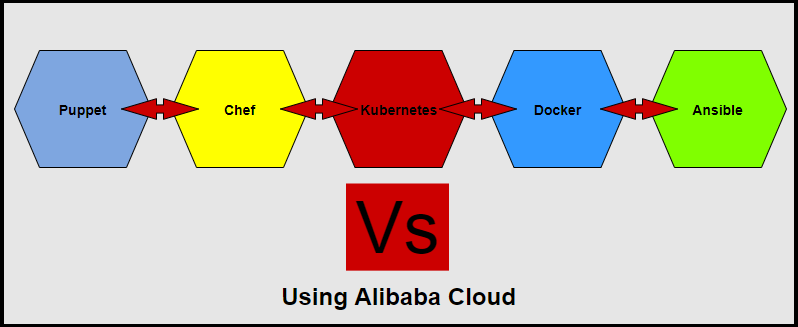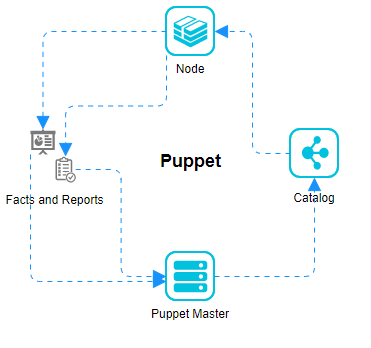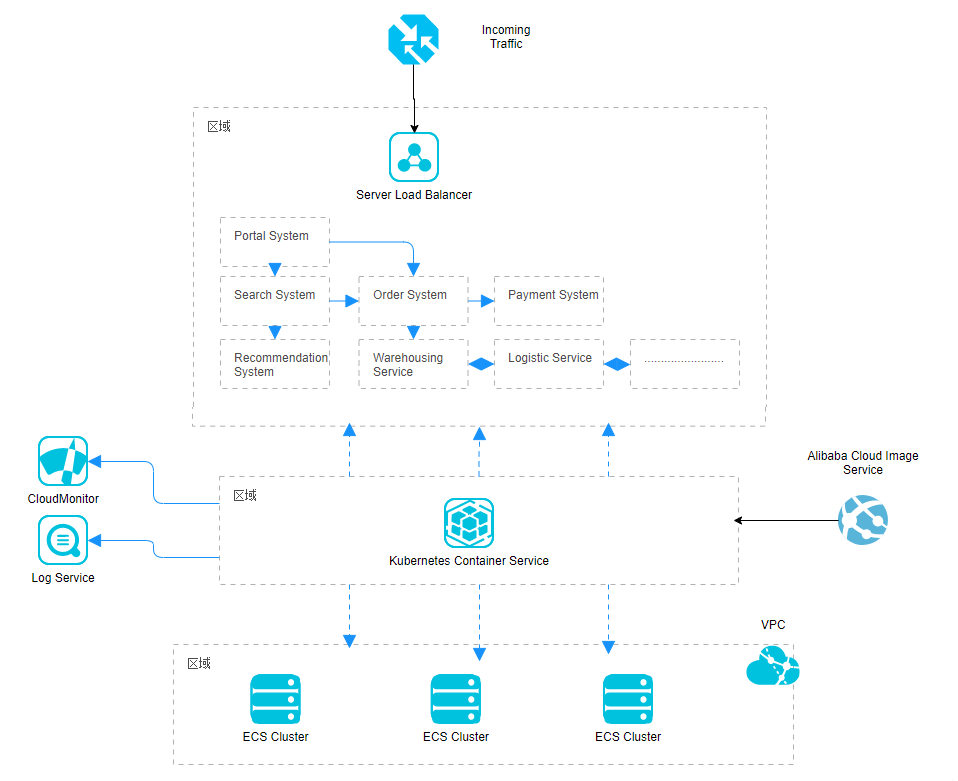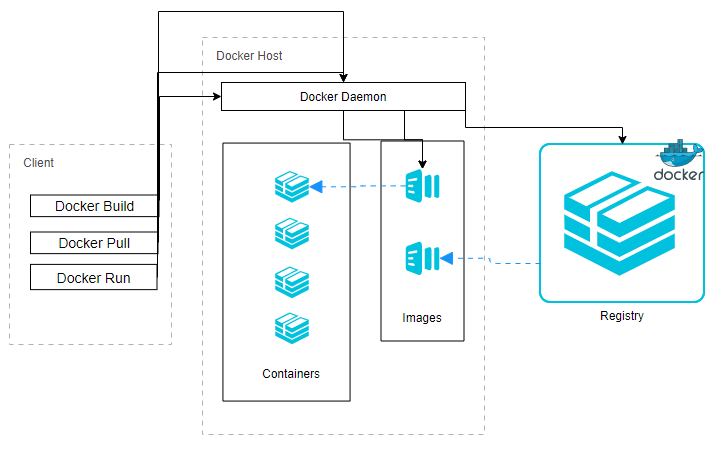By Shantanu Kaushik
DevOps is the focus of many organizations moving into the future. It is the technology hot buzzword nowadays, and despite its continued evolution, it is still growing and reaching new heights. Different variations, practices, methodologies, and tools have been introduced to further increase productivity, availability, reliability, and effective operations using DevOps.
The main aim we have is to have more effective team collaboration and cut down processes with automation.
By automating the DevOps process, we work towards making the system more efficient, less prone to errors, and eliminating issues that are introduced into the system by either human intervention or some other malfunctioning module. This affects the overall up-time and makes the process more reliable. Another benefit is the accelerated performance due to managed time through automation.
Alibaba Cloud has many tools and solutions that work with the DevOps process to provide enhanced user experience and ease of deployment. If you are thinking about continuous integration, continuous delivery, continuous deployment, and continuous testing scenarios, you have to think about automation tools and getting a provider like Alibaba Cloud that provides a strong backend using tools, such as Terraform - Infrastructure as Code (IAC), container, and Kubernetes.
Many open-source applications today have established themselves as industry standards in automation tools and these tools define many concepts within the DevOps overlay. As DevOps is still evolving, new concepts and practices are introduced very often.
As DevOps suggests, it works for accelerated IT services delivery by achieving better collaboration and communication between developers and operators. Alibaba Cloud has worked to the true meaning of DevOps and has provided solutions that are tailor-made and cater to start-ups, SMEs, and large enterprises.
Without wasting any more time, let's talk about these tools and compare them.

Puppet is an open-source, cross-platform, and flexible DevOps configuration management tool that is used to automate the delivery and operations side of the software delivery lifecycle (SDLC.) When deployed with Alibaba Cloud, it utilizes the backend products like the Elastic Compute Service (ECS) to the fullest. Puppet can be used for secure application delivery by the operations and development teams from anywhere. This is achieved using the Alibaba Cloud IAC service.
Puppet expands on the possibility of increased productivity and manageability by sending out real-time alerts and generating detailed reports for the user to reveal and act on changes that require attention.

Puppet functions with an agent and a master. Puppet agent runs on the client servers and the Puppet master takes care of the configuration. This SSL secured service tool easily automates the configuration, testing, and review tasks across development, production, and test environments.
This Client-Server modeled configuration management tool is best known for its flexible and scalable automation practices. Products like Alibaba Cloud simple application server, database service, and server load balancer are leveraged while using Chef for automating the configuration management.
Chef passes instructions to automate tasks pan deployment, configuration, and management modules to define the infrastructure as code (IAC.) Chef uses the same setup to define changes in test configurations, provision, and control ECS instances. It uses JSON to make package configuration and these packages are called Cookbooks.
Kubernetes is an open-source system that automates the process of running applications inside of containers in a cluster. It can manage operations that are spread across multiple containers while monitoring them at the same time.
While building applications, Kubernetes enables the developer to directly use its core services. It automates the process of deployment, maintenance, and also automates scaling for containerized applications.

The diagram above shows the workflow of the Kubernetes container service with the Alibaba Cloud environment. Kubernetes support private, public, hybrid, and multi-cloud environments, and also support for self-healing and server load balancing. While talking about features, we cannot exclude its primary features that include auto-scaling, auto-replication, and auto-restart.
Before Kubernetes came into the picture, Docker was the flagbearer when it came to a tool that automates to help developers with build, deploy, and run application using containers. Using Linux Containers (LxC), it churns out the functionality to create virtual environments for better and improved collaboration.
Alibaba Cloud has a dedicated guide on how to deploy and use docker.
Docker provides a secure environment for the developer to build applications for on-premise and the cloud. Docker containers are lightweight as they don't require any additional hypervisor and runs within the kernel of the host machine.
It uses the dockerd command with a Restful API for interface and a command line interface for the client side.

This representation outlines the workflow of Docker.
Ansible is an open-source server configuration and management tool that is used to automate continuous delivery. It enables faster application deployment by providing automatic configuration management, cloud provisioning, and orchestration for the DevOps teams. It can be used to write custom applications and to re-configure machines.
| Puppet | Chef | Kubernetes | Docker | Anisble | |
|---|---|---|---|---|---|
| Configuration Management | Y | Y | Y | XX Continuous Delivery Tool | Y |
| Container Support | XX | XX | Y | Y | N |
| Advanced User | Not very developer friendly | Kubernetes with Alibaba Cloud container service (ACK) provides among the best of operational standards. | User Friendly in nature. Follow the guide to deploy and use here. | Beginners can use it. Easy and user friendly. | |
| Operations Centric | Operations Centric | Supports modern day developer scenarios | Support various modern day and traditional components and practices. | Good for front-end developing solutions | |
| Complex Configuration required | Uses pipelines to schedule and execute | Built for larger projects and provides unparalleled support and options when combined with a IAC service like Terraform | Docker support very simple management as it allows configuration for even a single process. | Pipeline based processing |
In a modern-day setup, the tool that makes it to the top is Kubernetes. It supports a wide variety of processes and has unparalleled support from Alibaba Cloud. Its integration with the IAC platform makes it one of the best tools for automation today.
We expect automation and monitoring as the basis of DevOps from build to management. The whole DevOps system has to be a reliable one. Automation will get you there but you need to keep your focus on reducing the development cycles and on increasing deployment frequency. If you can use the tools mentioned above and regulate or streamline the whole process, you have successfully achieved agility through DevOps.
The views expressed herein are for reference only and don't necessarily represent the official views of Alibaba Cloud.

2,593 posts | 789 followers
FollowAlibaba Cloud New Products - March 10, 2021
Alibaba Cloud Community - March 8, 2022
Alibaba Clouder - April 17, 2020
Alibaba Cloud Community - December 13, 2022
Alibaba Cloud Community - March 2, 2022
Alibaba Clouder - September 9, 2020

2,593 posts | 789 followers
Follow DevOps Solution
DevOps Solution
Accelerate software development and delivery by integrating DevOps with the cloud
Learn More Alibaba Cloud Flow
Alibaba Cloud Flow
An enterprise-level continuous delivery tool.
Learn More Container Service for Kubernetes
Container Service for Kubernetes
Alibaba Cloud Container Service for Kubernetes is a fully managed cloud container management service that supports native Kubernetes and integrates with other Alibaba Cloud products.
Learn More Function Compute
Function Compute
Alibaba Cloud Function Compute is a fully-managed event-driven compute service. It allows you to focus on writing and uploading code without the need to manage infrastructure such as servers.
Learn MoreMore Posts by Alibaba Clouder